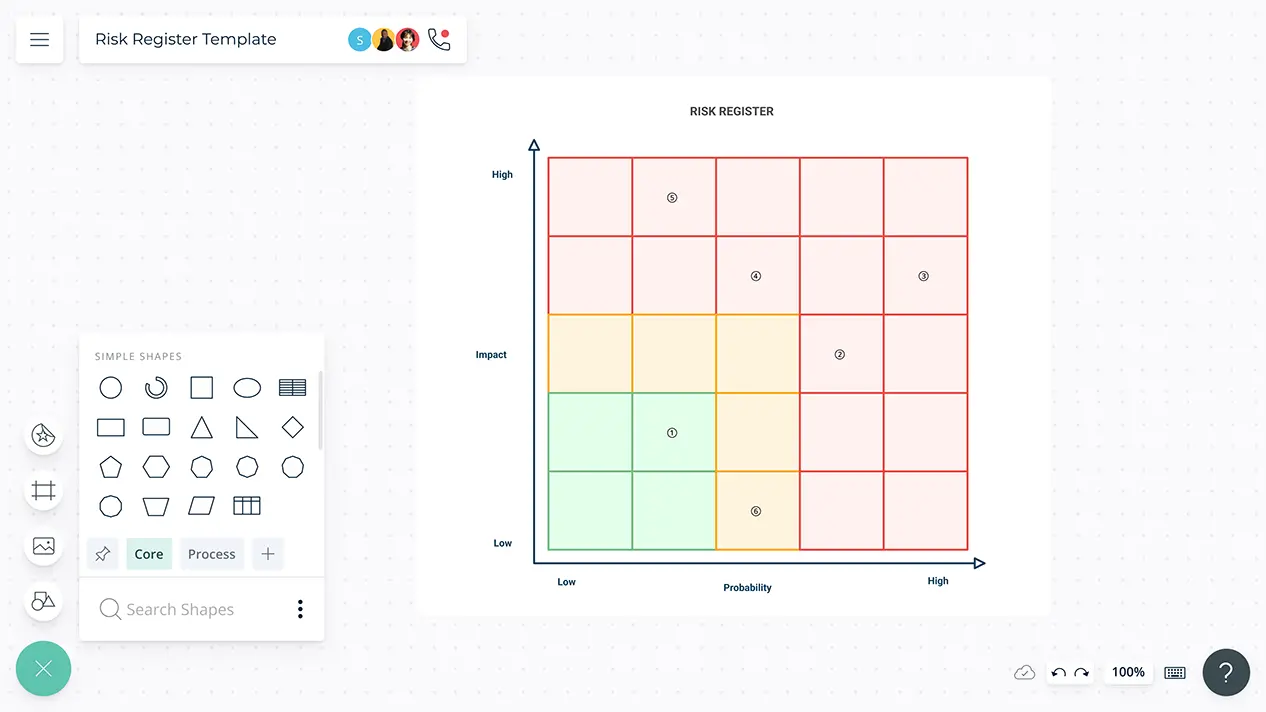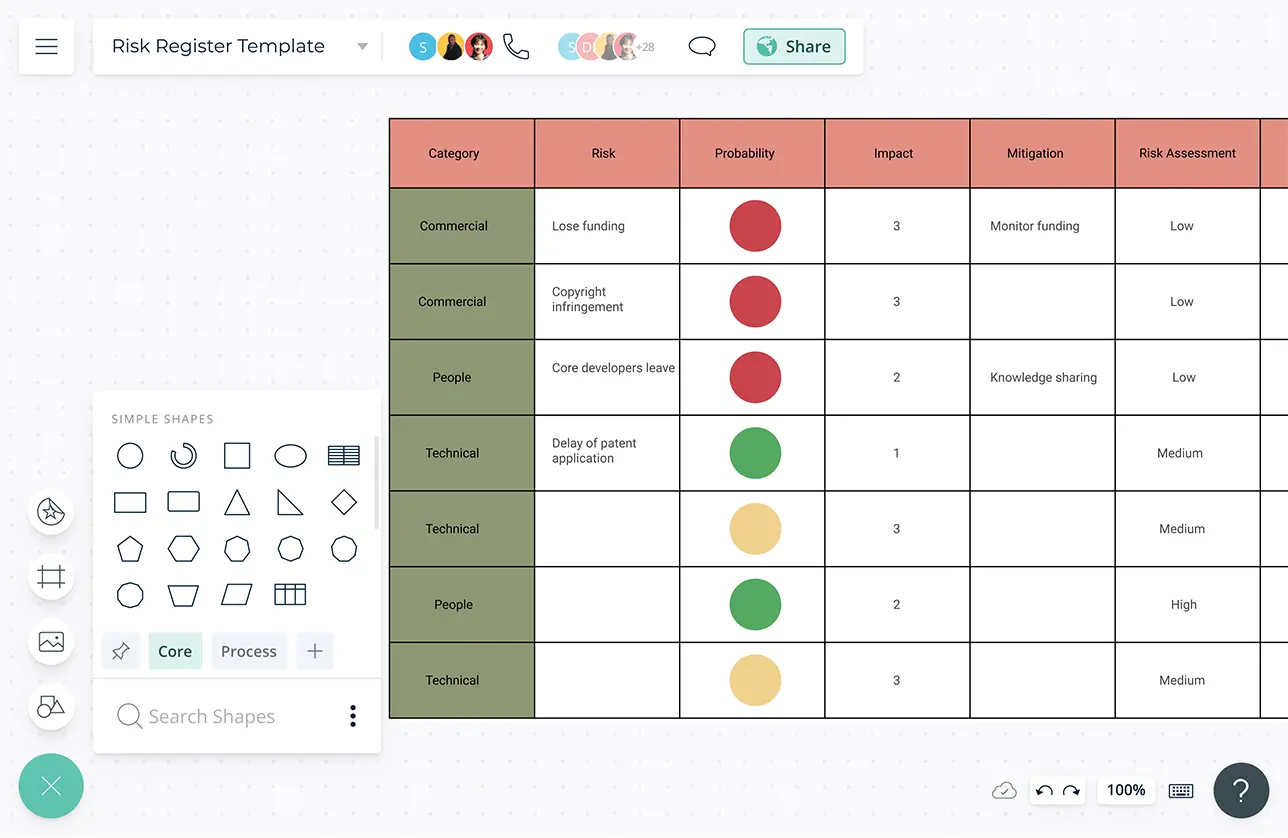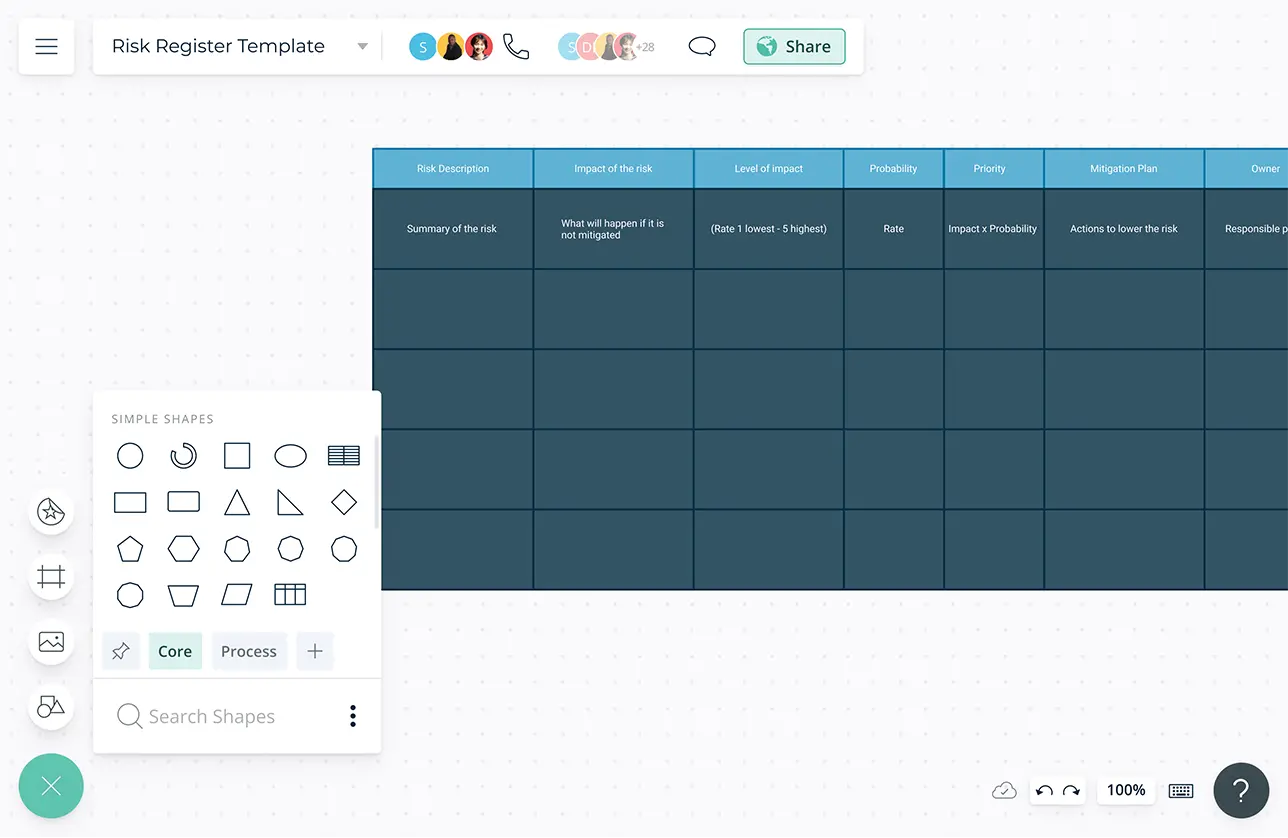Risk Register Template
Streamline Risk Management
Identify, assess, and monitor risks affecting projects and plan mitigation measures.
- Customizable risk register templates to get a headstart
- Real-time collaboration to work seamlessly with project stakeholders
- Export your diagrams in JPEG, PNG, PDF and SVG formats

- Customizable risk register templates to get a headstart
- Real-time collaboration to work seamlessly with project stakeholders
- Export your diagrams in JPEG, PNG, PDF and SVG formats


Brainstorm Potential Risks

Tools like mind maps and post-it notes walls to conduct productive brainstorming and planning sessions.
Visual voting for risk prioritization and prioritization grids to visually rank risks based on impact and probability.
Multiple pre-made templates to get a headstart on identifying, evaluating, and prioritizing risks.
Use table shape with advanced customizability to easily classify risk descriptions, risk owners, triggers, probability, and response plans.
Professional diagramming tools to visually plan risk mitigation strategies and action plans.
Keep Everyone & Everything in Sync

Real-time mouse tracking & change previews to collaborate on a shared canvas with all employees and stakeholders.
True multi-user collaboration with concurrent editing and automatic conflict resolution.
In-app video conferencing integrated into the platform to make users feel like they’re in the same room.
Comment with context, have discussions and follow-ups on the same canvas. Async!
Multiple access and role levels to simplify managing, sharing, editing, and reviewing the risk register.


Keep Track of Your Risk Management Plans

Multiple app integrations to help you import and export data across teams on different platforms.
Add documents and assets with in-app previews to create a central access point for all risk-related information.
Set a timeline and assign responsibilities for risk mitigation in accordance with available resources.
Expand your risk register by capturing additional details on risks, owners, and action steps with additional data fields and properties.
Built-in tools to create interactive presentations to instantly present the risk management plans and strategies to the stakeholders.
What Is a Risk Register?
The risk register, which is also referred to as a risk log, is a project management tool. It is used to document information about identified risks which include the nature of the risk, the level of risk, who is responsible for it, and the preventative measures, and corrective action in place. The risk register is usually created at the beginning of a project, and is frequently referenced and updated throughout the project lifecycle. It serves as a brainstorming framework to establish risks and as a database of possible and potential risks and mitigation measures for them.
How to Create a Risk Register?
- Creating the risk register begins with identifying the risks. These can be derived from the past lessons learned, historical data pertaining to similar projects, task owners, and through brainstorming.
- Document the risks using a Creately risk register template. As required you can add information such as the owner of the risk, the likelihood of it occurring, the impact it would make, the mitigation actions, and more to the register.
- Identify the possible impact it would cause should the risk occur. Based on the likelihood and the probability of the risk resulting in adverse consequences, you can then rank (low, medium, high) them from high probability and high risk to low probability and low risk.
- Identify if there are controls currently in place to address the identified risks, and if not determine the mitigation actions to be applied based on the ranks given to them.
- Monitoring each risk should be carried out by the responsible person who should also lead action to mitigate it.
